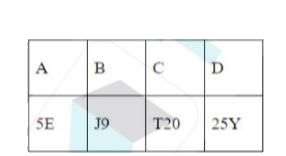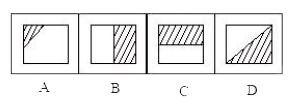Find the odd. term out giving reasons.
Mitochondria, Endoplasmic reticulum, Chromoplast, Ribosomes
To find the odd term out from the list: Mitochondria, Endoplasmic reticulum, Chromoplast, and Ribosomes, we can analyze each option based on their characteristics and functions.
1. Identify the Organelles:
- Mitochondria: Known as the powerhouse of the cell, mitochondria are organelles found in both plant and animal cells. They are responsible for energy production through cellular respiration.
- Endoplasmic Reticulum (ER): The ER is involved in protein and lipid synthesis and is present in both plant and animal cells. It comes in two forms: rough ER (with ribosomes) and smooth ER (without ribosomes).
- Chromoplast: Chromoplasts are a type of plastid found in plant cells. They contain pigments that give color to fruits and flowers and are involved in photosynthesis.
- Ribosomes: Ribosomes are the sites of protein synthesis and are found in both prokaryotic and eukaryotic cells, including plant and animal cells.
2. Group the Organelles:
- Mitochondria, Endoplasmic Reticulum, and Ribosomes can be found in both plant and animal cells.
- Chromoplasts, however, are specific to plant cells and are a type of plastid.
3. Determine the Odd One Out:
- Since Chromoplasts are only found in plant cells and are a type of plastid, while the other three (Mitochondria, Endoplasmic Reticulum, and Ribosomes) are present in both plant and animal cells, Chromoplast is the odd one out.
4. Conclusion:
- The odd term out is Chromoplast because it is exclusively found in plant cells, whereas the others are found in both plant and animal cells.
- Mitochondria: Known as the powerhouse of the cell, mitochondria are organelles found in both plant and animal cells. They are responsible for energy production through cellular respiration.
- Endoplasmic Reticulum (ER): The ER is involved in protein and lipid synthesis and is present in both plant and animal cells. It comes in two forms: rough ER (with ribosomes) and smooth ER (without ribosomes).
- Chromoplast: Chromoplasts are a type of plastid found in plant cells. They contain pigments that give color to fruits and flowers and are involved in photosynthesis.
- Ribosomes: Ribosomes are the sites of protein synthesis and are found in both prokaryotic and eukaryotic cells, including plant and animal cells.
- Mitochondria, Endoplasmic Reticulum, and Ribosomes can be found in both plant and animal cells.
- Chromoplasts, however, are specific to plant cells and are a type of plastid.
- Since Chromoplasts are only found in plant cells and are a type of plastid, while the other three (Mitochondria, Endoplasmic Reticulum, and Ribosomes) are present in both plant and animal cells, Chromoplast is the odd one out.
- The odd term out is Chromoplast because it is exclusively found in plant cells, whereas the others are found in both plant and animal cells.
Topper's Solved these Questions
- CELL DIVISION AND CELL CYCLE Book:PEARSON IIT JEE FOUNDATIONChapter:CELL DIVISION AND CELL CYCLE Exercise:ASSESSMENT TESTS (Answer the following questions)
Explore 2 Videos
- CELL DIVISION AND CELL CYCLE Book:PEARSON IIT JEE FOUNDATIONChapter:CELL DIVISION AND CELL CYCLE Exercise:ASSESSMENT TESTS (Select the correct alternatives)
Explore 10 Videos
- CELL-THE BASIC UNIT OF LIFEBook:PEARSON IIT JEE FOUNDATIONChapter:CELL-THE BASIC UNIT OF LIFEExercise:MASTERING THE CONCEPTS (Assertion and Reasons) (Choose the correct option)
Explore 5 Videos
Similar Questions
Knowledge Check
Find the odd one out .
 ACBACBDD
ACBACBDDFind the odd one out:
ATailorBCarpenterCGoldsmithDTeacherFind the odd one out.
 ANewtonBMetreCCandelaDKelvin
ANewtonBMetreCCandelaDKelvin






